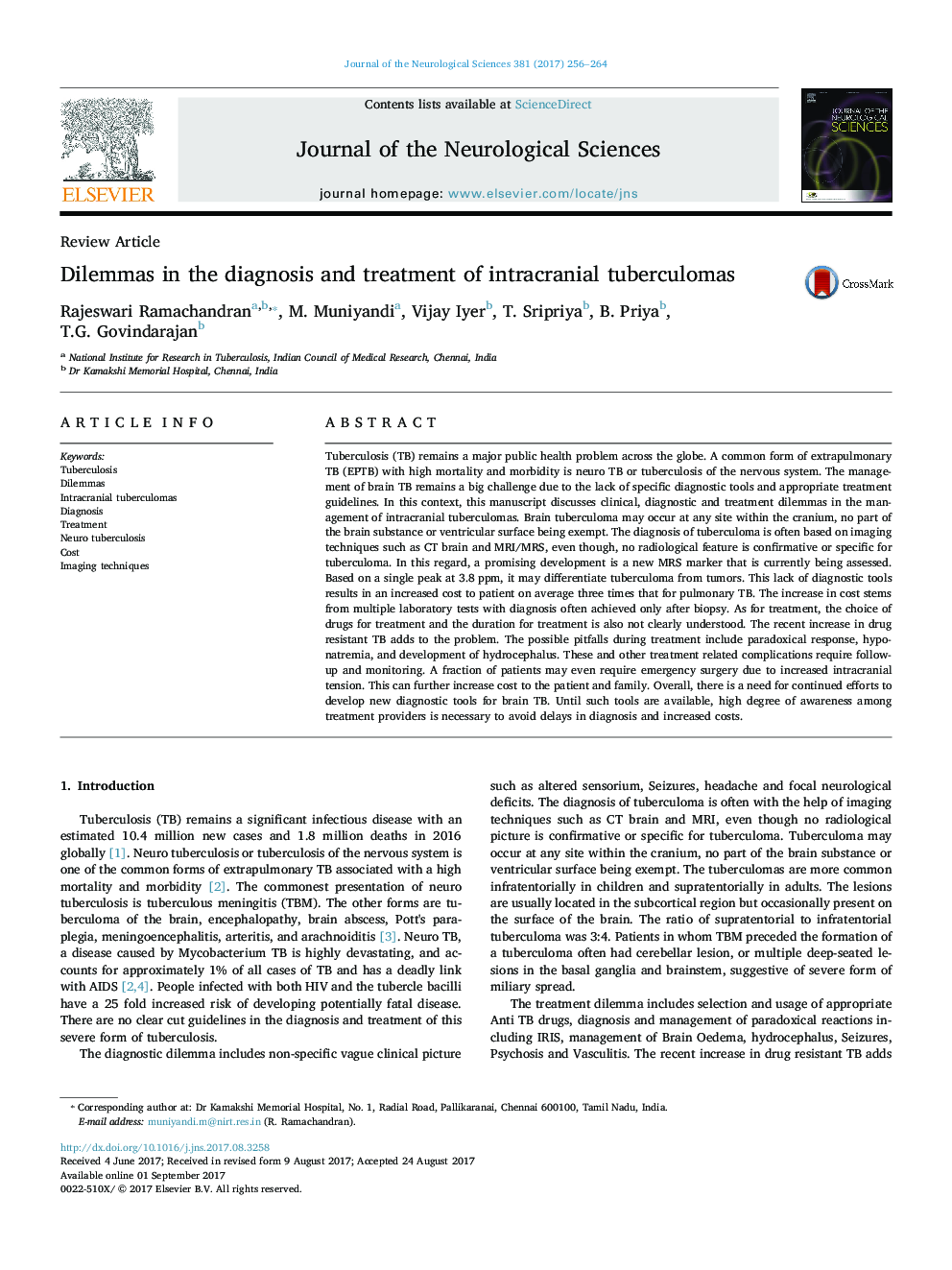| Article ID | Journal | Published Year | Pages | File Type |
|---|---|---|---|---|
| 5502494 | Journal of the Neurological Sciences | 2017 | 9 Pages |
â¢Neuro TB is associated with high mortality and morbidity.â¢Diagnosis of brain tuberculoma is based on imaging techniques even though no radiological feature is specific for tuberculoma.â¢Lack of diagnostic tool increases the costs to the patient.â¢Newer diagnostic tools are needed for early diagnosis.â¢Clinical trials are needed for better understanding of the choice of drugs for treatment and the duration of treatment.
Tuberculosis (TB) remains a major public health problem across the globe. A common form of extrapulmonary TB (EPTB) with high mortality and morbidity is neuro TB or tuberculosis of the nervous system. The management of brain TB remains a big challenge due to the lack of specific diagnostic tools and appropriate treatment guidelines. In this context, this manuscript discusses clinical, diagnostic and treatment dilemmas in the management of intracranial tuberculomas. Brain tuberculoma may occur at any site within the cranium, no part of the brain substance or ventricular surface being exempt. The diagnosis of tuberculoma is often based on imaging techniques such as CT brain and MRI/MRS, even though, no radiological feature is confirmative or specific for tuberculoma. In this regard, a promising development is a new MRS marker that is currently being assessed. Based on a single peak at 3.8Â ppm, it may differentiate tuberculoma from tumors. This lack of diagnostic tools results in an increased cost to patient on average three times that for pulmonary TB. The increase in cost stems from multiple laboratory tests with diagnosis often achieved only after biopsy. As for treatment, the choice of drugs for treatment and the duration for treatment is also not clearly understood. The recent increase in drug resistant TB adds to the problem. The possible pitfalls during treatment include paradoxical response, hyponatremia, and development of hydrocephalus. These and other treatment related complications require follow-up and monitoring. A fraction of patients may even require emergency surgery due to increased intracranial tension. This can further increase cost to the patient and family. Overall, there is a need for continued efforts to develop new diagnostic tools for brain TB. Until such tools are available, high degree of awareness among treatment providers is necessary to avoid delays in diagnosis and increased costs.
